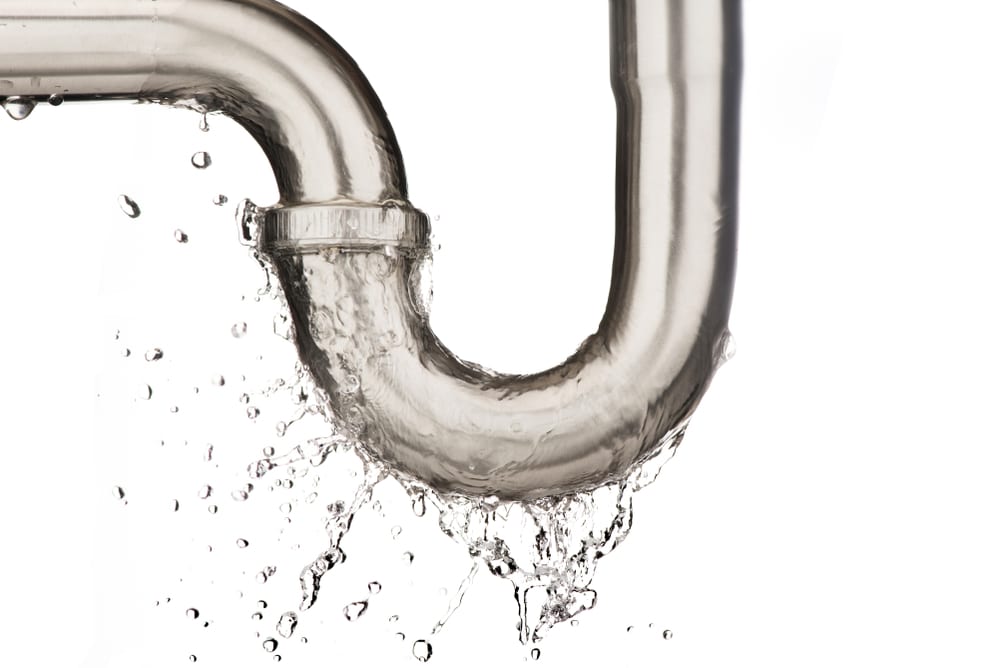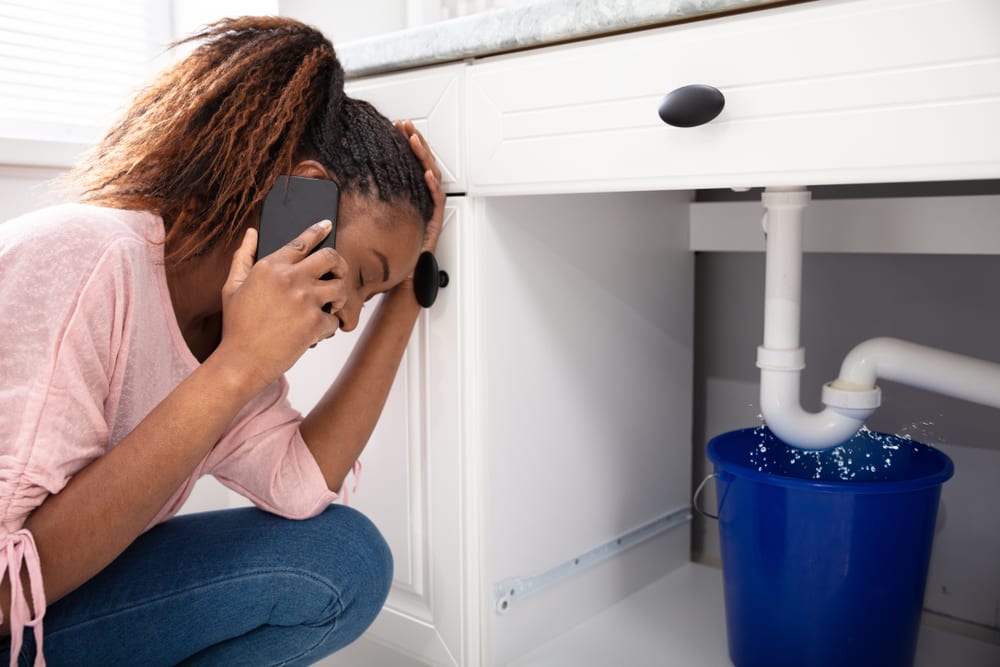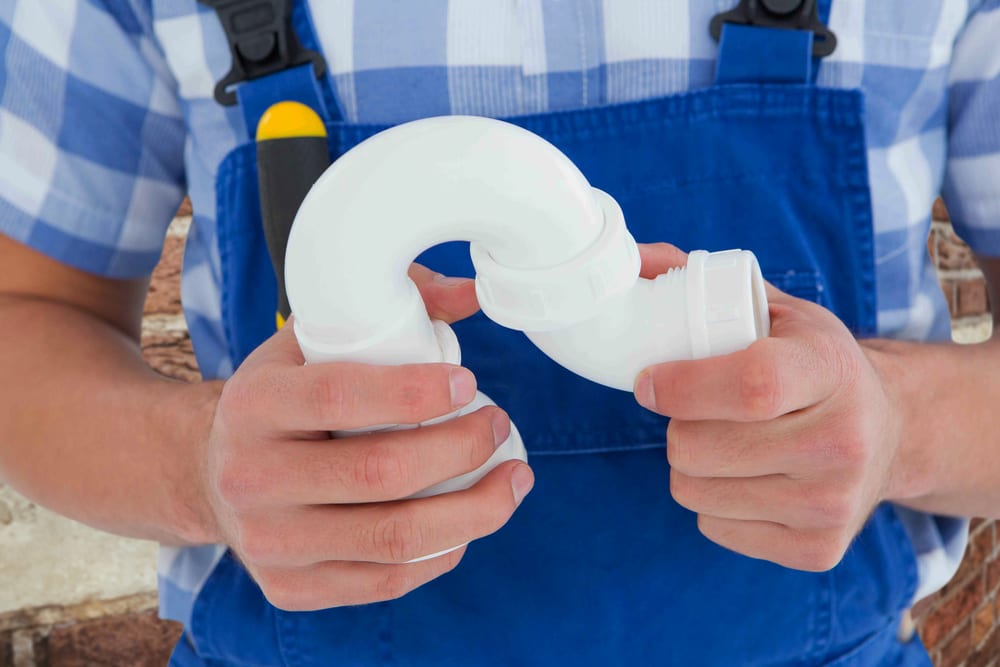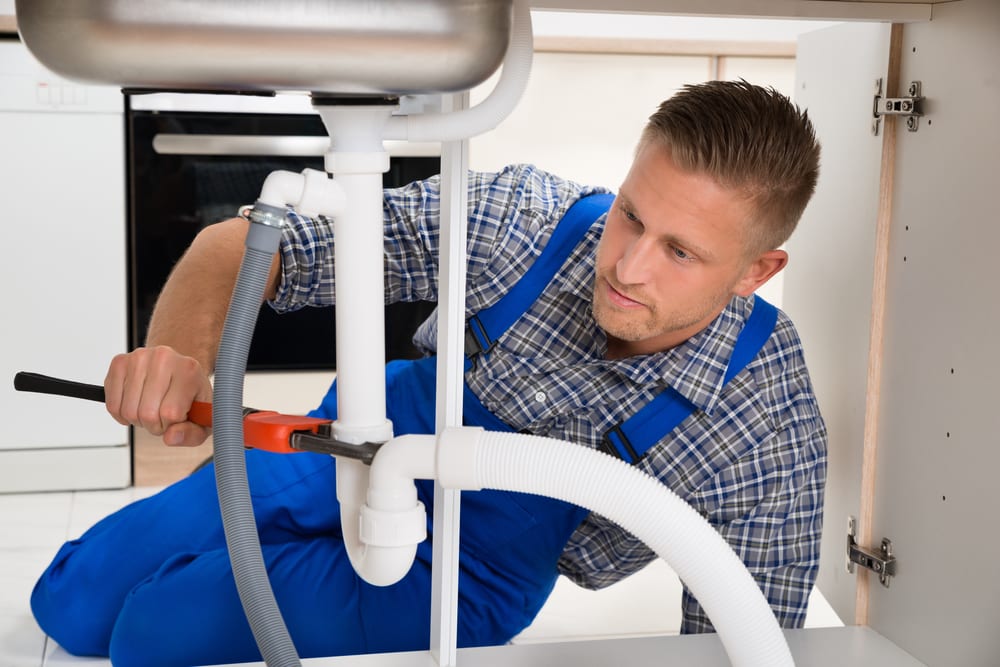
Table of Contents
How Does a P-Trap Pipe Work?
If you open the cabinets beneath your kitchen sink, you will see a u-shape pipe that is connected to your wall. The official name of this pipe below your sink is a p-trap and it’s engineered to catch solid objects such as food scraps, rings, forks, tools, toys, and earrings. In addition, the p-trap plumbing pipe provides a small amount of storage space for water in your sewer pipes. Once you turn on the water to wash your hands or the dishes, this u-shape pipe will collect water to prevent sewer gases and odors from entering the household through the drainage pipe.
The majority of p-trap pipes in kitchens have a diameter of 1 ½ inches. On the other hand, the diameter of the pipe will vary depending on its location. This u-shape pipe is ordinarily installed in bathrooms, kitchens, basements, and laundry rooms. When you turn the sink on to clean the dishes, the p-trap will collect waste water and items such as broccoli, spinach, meat, and potatoes.
The objects will stay in the trap beneath your sink until they start to disintegrate. The vegetables and solids will be flushed from the p-trap when you use your sink again. Once the water is activated, the old waste water is flushed down a sewer pipe that is connected to a main line that is installed near the street.
 Types of P-Trap Issues
Types of P-Trap Issues
Pipe Leaks
Most types of p-trap pipes are assembled with ABS, PVC, or metal. While a p-trap is constructed with durable materials, this type of pipe is vulnerable to damage, corrosion, and leaks as it becomes older. The first type of problem with traps includes leaks between pipe connections. This problem will cause damage to your kitchen cabinets and expose your household to sewage odors.
Odors
If your p-trap is leaking beneath your sink, the water seal in the pipe will be eliminated. This type of problem will allow nitrogen hydrogen sulfide, and methane gases to leak into the air of your house. To avoid negative health consequences, it’s important to replace the cracked p-trap. Installing a new p-trap will block toxic sewer gases from entering the household.
Clogged Pipes
Do not flush large chunks of beef, fish, or chicken down the drain in your kitchen. Chicken or beef can take a couple of hours to disintegrate in the p-trap after it’s flushed down the drain. In some cases, the meat will become permanently stuck in the trap and will start to decompose or rot. If the fish or beef in the pipe starts to decompose, you will notice odors near your kitchen sink. In addition, you will be unable to flush water down the drain when you are washing the dishes.
Tips & Insights: Call Our Team of Local Plumbers in St. Augustine, FL To Receive Help With a Plumbing Problem
How To Replace the P-Trap of a Sink
Ordinary problems with old u-shape pipes include loose joints and corrosion. If the connections between the p-trap and sewer pipe become loose and cannot be fixed by tightening the nuts, you will be required to install a new p-trap assembly. To help you fix your water leak, we have compiled a list of steps to follow when you are replacing your p-trap.
Step 1: Move a Bucket Beneath the Sink & Remove the Curved P-Trap
Prior to removing the u-shape pipe, it’s important to place a medium bucket below the sink to prevent water damage to your cabinets. Grab a few paper towels that can be used to wipe water from the leaking p-trap. Next, disassemble the broken p-trap by unthreading the nuts of the pipe. Disassemble the pipe by hand or with a pair of pliers. Once the nuts are removed, disconnect the p-trap from the tailpipe.
When you start to disconnect the trap, you will start to see objects such as vegetables, hair, and grease. Use the end of a pencil to push the objects out of the p-trap plumbing pipe. Place the objects in the bucket and wash the interior u-shape pipe with soap and water. Next, remove the slip nut that is connected to the end of the tailpipe
 Step 2: Detach the Trap Arm & Put Together the New Arm
Step 2: Detach the Trap Arm & Put Together the New Arm
Remove the slip nut that is integrated to the trap arm and sewer pipe in the wall. To disassemble the trap arm, use your hands to pull it from the pipe. The next step is to cut the trap arm to ensure it’s the same size as the old trap arm. If you do not know how to cut pipes, purchase a new trap arm that is the same size as the old pipe.
Perform an inspection to confirm the p-trap bend and arm will fit with the sewer pipe and tailpipe. Once you confirm the arm is the correct size, attach a nut to the trap arm. The threads of the nut should be pointing towards the connection of the arm. Next, connect a nut to the direct side of the arm. The threads of the nut should point to the straight side. Next, attach a washer to the direct end of the trap arm.
Tips & Insights: Contact Our Licensed Plumbers in St. Johns, FL To Receive Support With Your Plumbing System
Step 3: Connect the New Trap Arm to the Drain & Align It
Connect the trap arm to the drain that is behind the wall. The next step is to integrate the trap bend with the exterior of the trap arm and to the tailpipe. Fasten the nuts to the correct fittings and hubs. Once the p-trap bend and arm are connected, align the angle of the trap arm to ensure it’s pointing to the wall.
Step 4: Secure the Slip Nuts
You will be required to secure the plastic or metal slip nuts by hand. If you are not able to tighten the nuts by hand, use pliers to create secure connections. The last step is to turn the sink on to confirm the slip nuts are tight. If a slip nut is loose, you will notice a water leak by the p-trap pipe. To prevent water damage, use your hands or pliers to tighten the connections and eliminate the leak.
 Plumbing Repair & Install Services
Plumbing Repair & Install Services
To receive help with a cracked or loose p-trap plumbing pipe, give our team of licensed plumbers a call by phone at (904) 217-5694. We offer a variety of financing plans to make it easy for you to pay for an emergency plumbing service. Our staff offers up front pricing and superior warranties to prevent problems throughout the replacement or repair project.
We offer plumbing services to households such as water line repair, water heater maintenance, sump pump replacement, drain clearing, and sewer line repair. Fenwick Home Services offers plumbing solutions to residents in areas of Florida such as Jacksonville, Atlantic Beach, and Orange Park. Our staff of certified plumbers has been offering dependable plumbing options to homeowners since 1969. Our team has over 50 years of experience in the heating, air conditioning, and plumbing industries.

